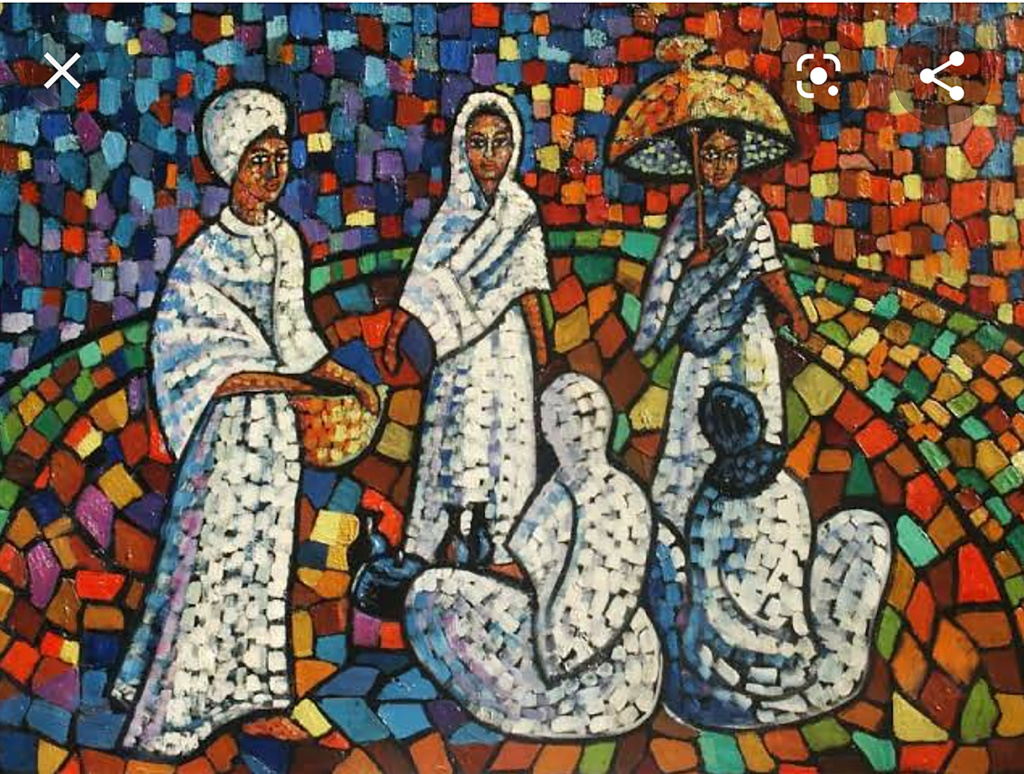Martha Nassibou, daughter of Dejazmatch Nassibou Zamanuel and Woizero Aztede Babitcheff, was born in Addis Abeba in 1931. Shortly after the Italian invasion of Ethiopia she was taken with all her family to Italy where they lived as captives of the Fascist government from 1936 to 1944. She wrote a book about this experience.
Martha attended the International School in Geneva and studied art at the Académie des Beaux Arts in Paris and the Art Students League in New York.
Martha began drawing and painting as a child. Her first exhibition of work was organized by the Ethiopian ministry of Education and Fine Arts in 1945 when she was only 14, organized by the Ministry of Commerce in Addis Abeba on the occasion of the visit of Queen of Greece. Martha later worked for the Ethiopian Ministry of Education, who commissioned her to illustrate school books for children.
From 1964, Martha lived in Europe where she continued to paint, exhibit, and execute commissioned work consisting mainly of portraits and large thematic canvases of Ethiopian inspiration. Martha also taught drawing and painting to both children and adults. Although she favoured oil and pastel, she liked to experiment with new media and in later years she produced some electronic paintings.
Martha was also an accomplished writer and a poet. She published a book to honour the memory of her father, Dejazmatch Nassibou Zamanuel, hero of the Ethiopian struggle against the occupying Italian army.
Her unique style, conveying intense vitality in both textures and colors, was inspired by ancient Ethiopian tradition and influenced by Byzantine art. Her paintings express a great depth of feeling and overflow with energy.
Nasibù (her artistic name) was a founding member of the Ethiopian Artists Club and her works of art are included in the collection of the National Museum of Ethiopia.

